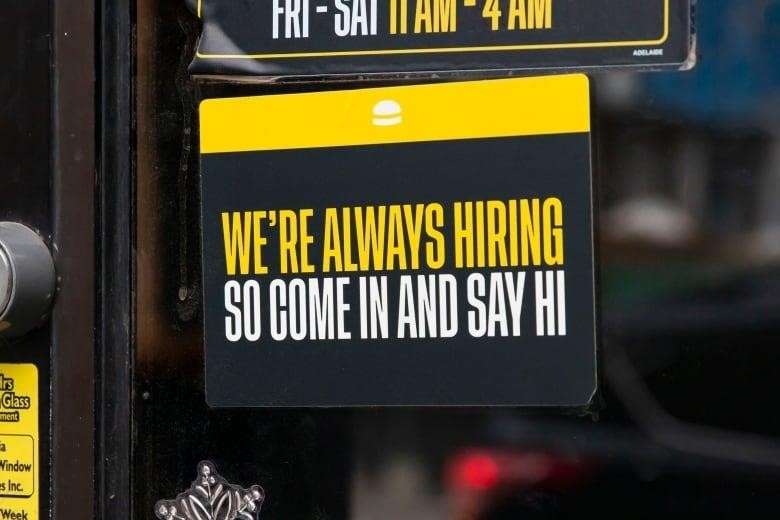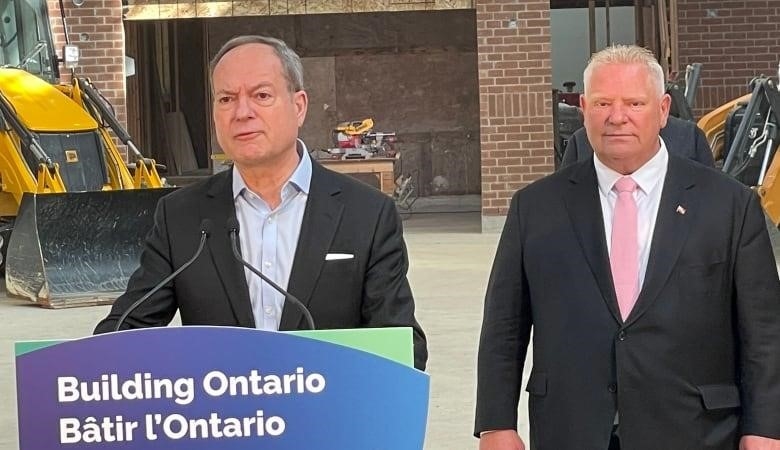
Corporate lobby groups say that getting rid of worker shortages should be a top priority for Doug Ford’s government
Businesses in Ontario hope that Premier Doug Ford’s budget on Thursday will help them deal with the shortage of workers they are experiencing.
Statistics Canada’s latest report on job openings came out on Tuesday, and it showed that 323,000 jobs in the province were still open.
Before each budget, organizations that represent businesses send the provincial government their annual laundry lists of requests. The level of worry about finding workers is what makes this year’s requests different from the rest.
The Ontario Chamber of Commerce says that 87 percent of the province’s large businesses have trouble finding workers.
The chamber’s senior director of policy, Claudia Dessanti, said, “There are very big gaps that need to be filled.”
According to data from Statistics Canada, about 7% of all jobs in the food service and lodging industries are open. The transportation, construction, child care, tourism, retail, and health care sectors all have “significant labor shortages,” according to the chamber of commerce.

Dennis Darby, the head of an industry lobbying group called Canadian Manufacturers and Exporters (CME), says it’s hard for the companies he works with to find workers.
In an interview, Darby said, “Manufacturers tell us that finding people with the skills they need is their top concern.”
On Tuesday, Ford announced one of his government’s budget plans for dealing with the labor shortage: more money to build, upgrade, and run skilled trades training centers, which are usually run by unions, businesses, and industry associations.
When asked what his government will do right away to deal with a lack of workers, Ford said that immigration is the answer.
“We’ve been on the federal government nonstop since we took office to bring in more people faster, cut through the red tape, and get people their work permits so they can come and start training and putting down roots,” Ford said at a news conference in Vaughan.
Labour Minister Monte McNaughton talked about the recent deal with Ottawa that gives Ontario the power to choose up to 18,000 immigrants per year to fill specific jobs, mostly in health care and skilled trades, where there aren’t enough workers.

McNaughton said that the government also wants to help people move from social assistance to the workforce in order to increase the size of Ontario’s labor pool.
During the government’s pre-budget consultations in January and February, many business lobby groups asked that the workforce problem be fixed:
- Canada’s Food, Health, and Consumer Products
The number one budget suggestion from the group that represents food processing companies and other companies that make household goods is to deal with “chronic labor shortages.”
“It is important to look abroad to fill the gap at home,” says its pre-budget submission. It asks the Ford government to work with the federal government to “simplify the Temporary Foreign Workers Program and increase economic immigration.”
- Canadian Automotive Industries Association (representing vehicle parts and repair companies)
Alana Baker, senior director of government relations for AIA Canada, said, “To fix the skills shortage in the industry, upskilling and training for new skills must be improved to meet the needs of employers.”
Baker told the Legislature’s finance committee during pre-budget talks, “We are asking the government to make sure that employers have more money to pay for third-party training for their workers.”

- The Ontario Tourism Industry Association;
The group’s director of policy and government affairs, Jessica Ng, said that tourism businesses are having trouble finding and keeping workers because they are leaving for other jobs.
At a pre-budget hearing of the finance committee, Ng called for “targeted support measures to create the stable workforce that our tourism industry needs so badly.”
- Canadian Independent Business Federation
“Labor shortages are making small businesses less competitive,” the CFIB told the government in a pre-budget report. “Wages and labor costs are still going up because the job market is so tight.”
CFIB’s main suggestion to fix this is to lower the small-business income tax rate, which is currently 3.2%.
Ontario has never had a labor shortage before
Brian Lewis, who just left his job as chief economist in the Ontario Public Service, says it’s very rare for a lack of workers to be one of the most important problems the provincial government has to deal with at budget time.
Lewis, who is now a senior fellow and lecturer at the Munk School for Global Affairs and Public Policy, said, “In my whole career as an economist, I’ve never talked about labor shortages.”
Lewis says that the government needs to make some decisions about labor in the health-care sector, which is the biggest part of Ontario’s budget. This is because the health-care sector employs the most people.
Lewis said, “I think it will be important to pay them more if you want more people to work in health care.” “It’s hard for me to think of a way to solve this problem that doesn’t involve some kind of compensation.”
Bill 124, which the Ford government called the Protecting a Sustainable Public Sector for Future Generations Act, limits wage increases for public sector workers in Ontario to no more than 1% per year.
Since the bill was passed, Lewis said, “the world has changed.” “I think this is a chance for the government to step back and say, ‘We need to try something new.'”
